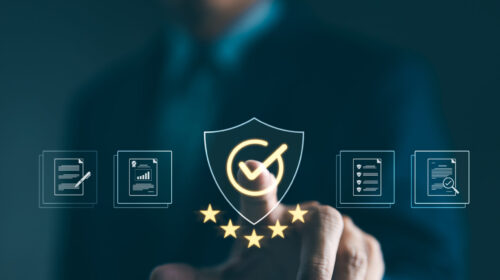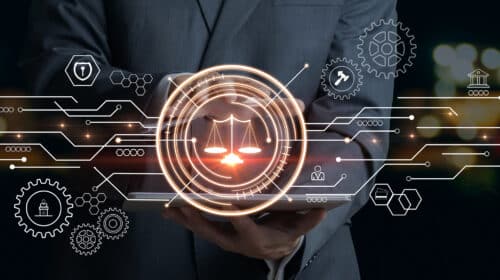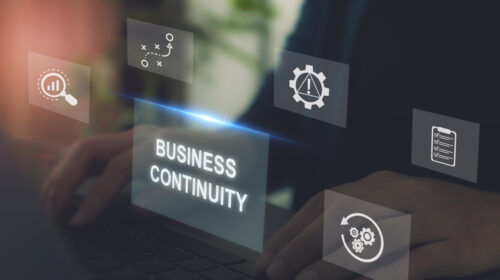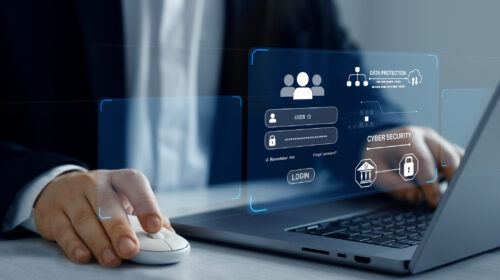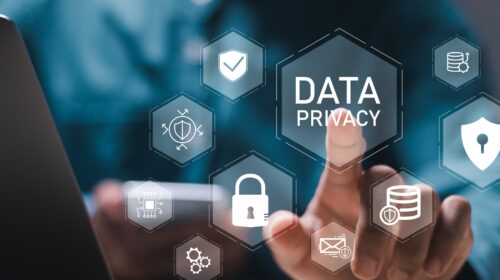Your company requires more than just a hodgepodge of antivirus software and firewalls. You need a cybersecurity strategy, a security plan that protects your business while supporting growth. This guide walks you through what makes a strong strategy, how to build one, and how to measure whether it’s working. In it, we provide roadmap examples, sector-specific guidance, and templates you…
Enterprise cybersecurity employs coordinated strategies, technologies, and processes to safeguard large organizations against digital threats. Unlike small business security, enterprise cybersecurity tackles the unique challenges of scale — managing vast numbers of employees across dispersed locations, securing complex and interconnected technology environments, and meeting strict regulatory requirements that vary by industry and geography. Why Enterprise Cybersecurity Matters The scale and…
Imagine this: It’s a typical Wednesday morning when your systems suddenly go dark. Hackers have stolen your customer database, phones are ringing nonstop with panicked clients, and regulators are raising eyebrows. For many businesses, this nightmare is a reality. However, the good news is that most of these disasters are preventable through regular cybersecurity audits and regular checkups that identify…
Artificial intelligence (AI) dominates headlines, but for many law firms, the conversation feels stuck in extremes: either breathless predictions of AI replacing lawyers or cautious skepticism that it’s just another passing tech trend. The reality is somewhere in between. AI is already reshaping how firms operate, offering powerful opportunities to improve efficiency, strengthen client service, and gain a competitive edge.…
Cybercrime is on the rise and getting more sophisticated. It’s no wonder organizations worldwide are making cybersecurity their top priority. It’s also why ISO 27001 has become a framework of choice for many businesses seeking to protect sensitive data. However, understanding the costs associated with ISO 27001 certification can be challenging. The price tag varies significantly based on your company’s…
Every data breach starts the same way: “We thought we were secure.” The difference between organizations that quickly recover and those that don’t often comes down to whether they had robust cybersecurity compliance programs in place before disaster struck. Compliance isn’t only about avoiding fines or passing audits. It’s about building a security approach that effectively stops attackers and demonstrates…
The ISO 27001 certification isn’t actually a regulatory requirement. But that doesn’t mean you can safely ignore it. That’s because it is quickly becoming a vital operational standard in many industries. What Is ISO 27001 and Who Uses It? ISO 27001, jointly authored by the ISO and IEC organizations, is an international standard for establishing, maintaining, and continually improving information…
The cybersecurity landscape is evolving faster than ever, but many organizations are struggling to keep pace. A growing cybersecurity skills gap is leaving mid-market firms particularly vulnerable, as the demand for qualified professionals far outstrips supply. In 2025, understanding the cybersecurity talent shortage and implementing strategies to close the gap are critical for maintaining strong defenses and regulatory compliance. The…
Choosing the right cybersecurity framework can feel overwhelming. You’re juggling customer demands, regulatory requirements, and budget constraints while trying to build a security program that works. Three frameworks consistently rise to the top of most organizations’ consideration lists: ISO 27001, SOC 2, and NIST Cybersecurity Framework. Each framework serves different purposes and audiences. Pick the wrong one, and you may…
First, the good news: the average global cost of the average data breach dropped in 2024 for the first time in five years. Now the bad news: that cost was still more than $4 million per incident. Clearly, more needs to be done to shore up cybersecurity. And the ISO 20071 security standard can help. Why ISO 27001 Matters for…
A Midwestern city declares a state of emergency after its systems are hacked. Tens of millions of health records are exposed in a healthcare company breach. A retail chain resorts to pen-and-paper recordkeeping at thousands of stores following a cyber-attack. Seemingly every day brings new headlines about cyber threats and their devastating consequences. Fortunately, the world’s most recognized security management…
On May 16, 2024, the SEC expanded the requirements of Regulation S-P to require covered financial institutions to take additional steps to detect, respond, and recover from unauthorized access, or use, of client information. Larger entities, such as Registered Investment Advisers (RIAs) with $1.5 billion or more in assets under management, will have until December 3, 2025, to comply. The…
Employee offboarding is the formal process of managing an employee’s departure, from resignation or termination, through the complete revocation of access to the company’s systems, data, and facilities. And while HR handles administrative tasks, your IT and security team manage the technical components that directly impact your organization’s risk. Despite its importance, most organizations treat offboarding as an afterthought. The…
Organizations today face two major IT challenges: rising costs and increasing difficulty in finding and retaining qualified professionals. Building essential capabilities like a Network Operations Center (NOC) or Security Operations Center (SOC) requires significant investments in personnel, tools, and training—resources that many companies simply can’t spare. The IT talent shortage isn’t just an HR problem—it’s a business risk. Digital transformation…
AI literacy is the most in-demand skill of 2025, and 88% of business leaders are prioritizing speeding up their AI adoption. The trend is clear: AI integration is shifting from optional to imperative. The stakes are high. Companies that delay AI adoption risk falling behind in innovation, productivity, and market competitiveness. But there’s good news, too: implementing AI needn’t require…
In March 2025, Honda Motor Company got a $632,500 wake-up call. That’s when the California Privacy Protection Agency fined the automotive giant for violating the California Consumer Privacy Act (CCPA). The agency found that the company required customers to provide too much of their personal information, made it too hard for them to exercise their right to privacy, and shared…







